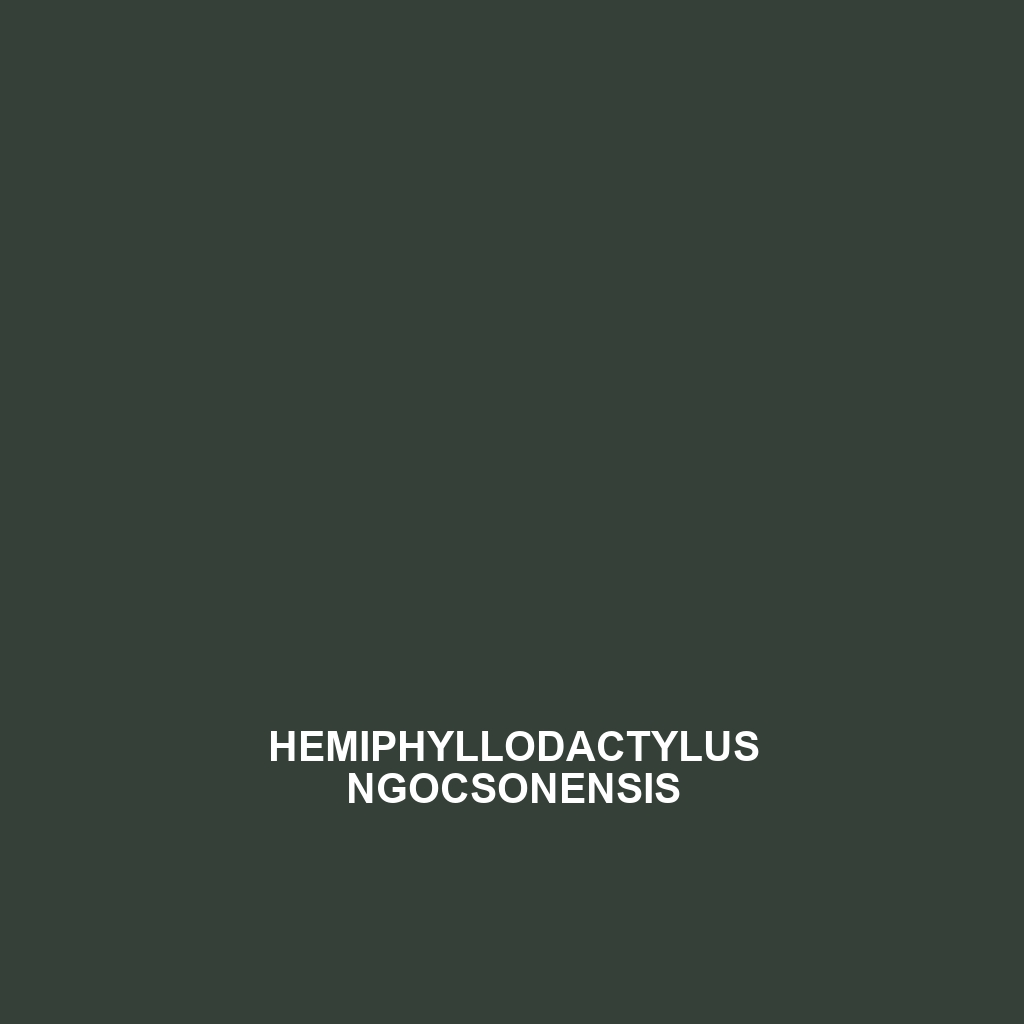Common Name
Hemiphyllodactylus ngocsonensis
Scientific Name
Hemiphyllodactylus ngocsonensis
Habitat
The Hemiphyllodactylus ngocsonensis is predominantly found in the lush, humid environments of rainforests in Vietnam, specifically in the Ngoc Son Nature Reserve. These habitats provide rich biodiversity and a plethora of microhabitats in which these geckos thrive. The region experiences a tropical climate characterized by high humidity, substantial rainfall, and warm temperatures year-round. Additionally, this species has been observed in lower montane forests, where the vegetation is dense, contributing to the unique ecological conditions required for its survival. The presence of decaying logs, leaf litter, and tree trunks in such environments plays a critical role in supporting their lifestyle and survival needs.
Physical Characteristics
Hemiphyllodactylus ngocsonensis exhibits distinctive physical traits that set it apart from other species within its genus. Typically measuring between 6 to 10 centimeters in length, this gecko has a slender body and elongated limbs which aid in its climbing abilities. The dorsal side is covered with a pattern of brown and gray shades, providing excellent camouflage against the bark of trees. Noteworthy are the enlarged toe pads, which are an adaptation that enables a strong grip on vertical surfaces. The vibrant, yet cryptic coloration helps it evade potential predators while hunting or moving through its arboreal habitat. Furthermore, the gecko’s skin has a unique texture that allows for minimal moisture loss—a crucial adaptation for life in humid environments.
Behavior
The behavior of Hemiphyllodactylus ngocsonensis often reflects its arboreal nature. This species displays primarily nocturnal behavior, emerging from its hiding spots at dusk to search for food. Social interactions are minimal, as these geckos are solitary outside the mating season. When they interact, it is usually for mating purposes, during which males engage in courtship displays characterized by head bobbing and push-ups. Their ability to cling to various surfaces enables them to expertly navigate their environment, allowing them to evade predators quickly. They possess a remarkable capacity for release; when threatened, they can shed their tail, which continues to wiggle, distracting the predator while the gecko escapes.
Diet
Hemiphyllodactylus ngocsonensis is recognized as an insectivore, primarily feeding on a diet rich in various insects. This includes mealworms, crickets, moths, and other small invertebrates found within its rainforest habitat. Their feeding patterns typically involve a sit-and-wait ambush strategy, where they remain still and blend into their surroundings until a target appears nearby. This feeding style, along with their agile hunting skills, allows them to effectively capture prey during nocturnal hunts.
Reproduction
The reproductive cycle of Hemiphyllodactylus ngocsonensis is notably characterized by seasonal breeding that coincides with the wetter months of the year, typically occurring from late spring to early summer. Females lay clutches of one to two eggs, which are deposited in secure locations such as under bark or within leaf litter to protect them from predators. The eggs generally incubate for approximately 50 to 70 days, depending on temperature and humidity conditions. Upon hatching, juvenile geckos are independent and begin their foraging adventures almost immediately, showcasing an intriguing aspect of their parental behavior, which is non-existent post-egg-laying.
Conservation Status
Hemiphyllodactylus ngocsonensis has been classified as vulnerable by the International Union for Conservation of Nature (IUCN). The main threats facing this species include habitat loss due to deforestation and urbanization, as well as climate change, which impacts the delicate environmental conditions it depends on. Conservation efforts are underway in some regions, such as habitat restoration initiatives and the establishment of protected areas. However, ongoing monitoring and further ecological research are essential to ensure the survival of this unique gecko species.
Interesting Facts
One fascinating aspect of the Hemiphyllodactylus ngocsonensis is its remarkable ability to adapt to microhabitats within its rainforest domain. For instance, individuals may exhibit color variations based on their particular environment—darker patterns are observed in shadier areas versus lighter ones in sunlit spots. Additionally, this species has been noted for its unique vocalizations, which can serve both for communication among individuals and to establish territory. These adaptations make Hemiphyllodactylus ngocsonensis a subject of interest for researchers studying evolutionary biology and behavioral ecology.
Role in Ecosystem
Hemiphyllodactylus ngocsonensis plays a significant ecological role within its habitat, primarily as a predator of various insect populations, thus contributing to the balance of the ecosystem. By controlling insect numbers, these geckos help maintain healthy plant life, which in turn supports the broader food web. Their existence also offers a food source for larger predators, such as snakes and birds, positioning them as integral components within the rainforest’s biodiversity. Furthermore, through their interactions and nutritional contributions, they enhance the overall health and stability of their ecosystem.
